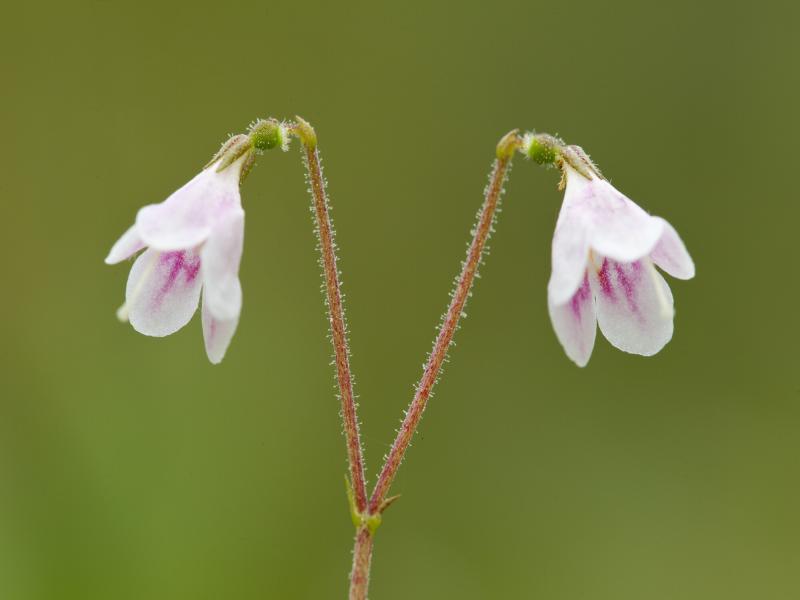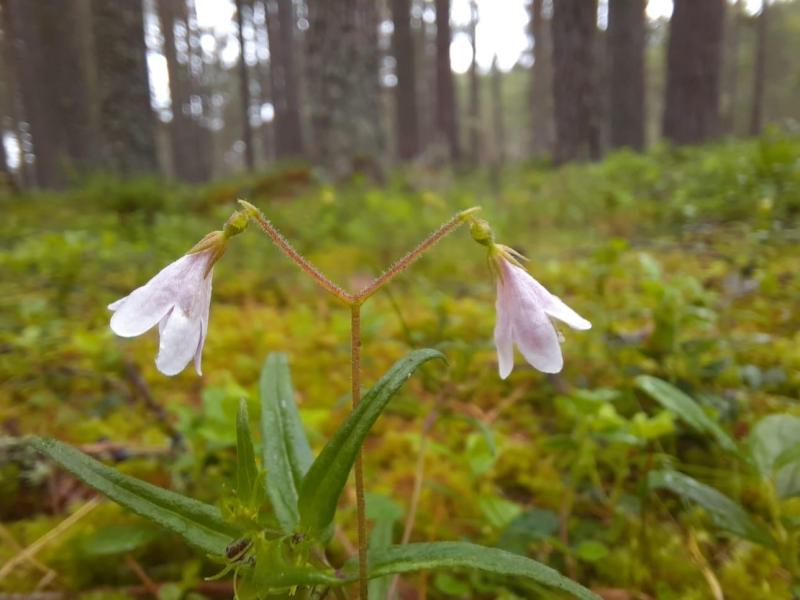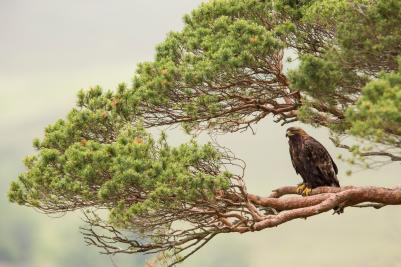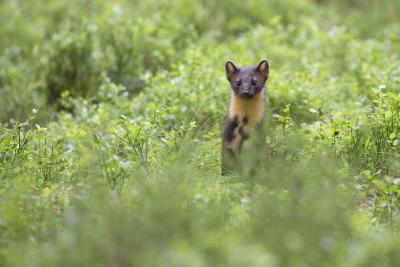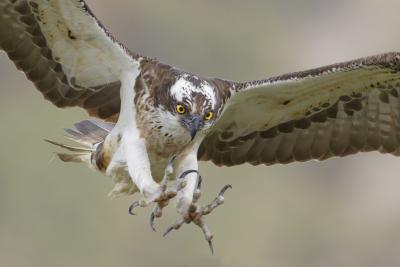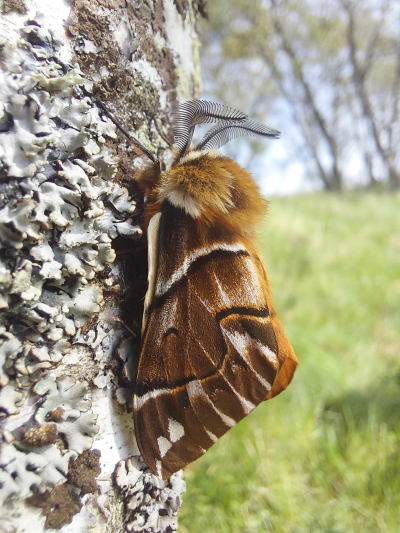Twinflower
Linnaea Borealis
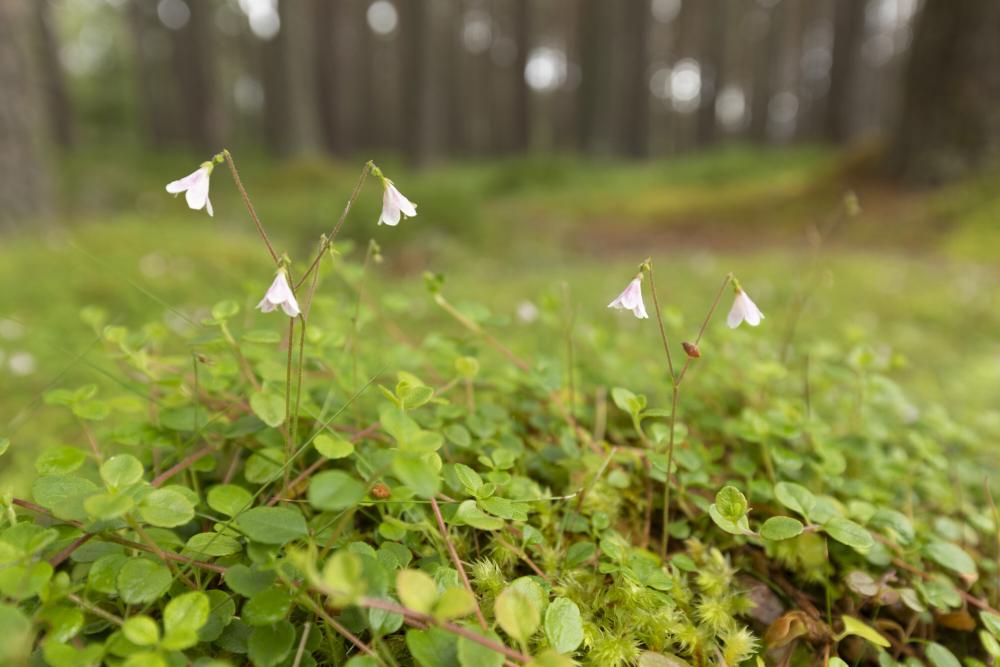
The twinflower is an iconic member of Caledonian pine woodlands. While rare, you’re likely to find them flowering in the northeast of Scotland – notably in the Cairngorms National Park.
Factsheet
Lifespan: Flowering lasts for seven days
Best time to spot: Mid-June and early July
Twinflower belongs to the honeysuckle family and can grow up to 15cm tall. As the name suggests, two flowers sit atop the delicate Y-shaped stem, which is brownish-green. It almost blends into the ground beneath it, while the pale pink of the bell-shaped flower provides a contrast.
Each flower head bears five downward-facing petals. The bloom lasts seven days, after which, if it is pollinated, the flower develops a small, one-seeded fruit that ripens over 36 days.
You can find these flowers in small clusters creeping across woodland floors. Spot two shoot types: reproductive and non-reproductive. Reproductive shoots bear flowers, while non-reproductive ones bear near-circular, vibrant green leaves. The leaves climb the stem in pairs (or twins).
Twinflower reproduce vegetatively via long stems called stolons. Growing up to 48cm, stolons wind their way beneath forest litter to expand the twinflower network, or produce branches that eventually help form a new plant entirely.
A hardy species, twinflower thrive in moderately fertile and reliably wet conditions, in places that are humus-rich (full of dark, organic material that forms in soil when plant and animal matter decays). This makes them fitting candidates for forests in the Cairngorms National Park.
Did you know?
The twinflower is an iconic member of Caledonian pine woodlands. While rare, you’re likely to find them flowering in the northeast of Scotland – notably in the Cairngorms National Park.
Factsheet
Lifespan: Flowering lasts for seven days
Best time to spot: Mid-June and early July
Twinflower belongs to the honeysuckle family and can grow up to 15cm tall. As the name suggests, two flowers sit atop the delicate Y-shaped stem, which is brownish-green. It almost blends into the ground beneath it, while the pale pink of the bell-shaped flower provides a contrast.
Each flower head bears five downward-facing petals. The bloom lasts seven days, after which, if it is pollinated, the flower develops a small, one-seeded fruit that ripens over 36 days.
You can find these flowers in small clusters creeping across woodland floors. Spot two shoot types: reproductive and non-reproductive. Reproductive shoots bear flowers, while non-reproductive ones bear near-circular, vibrant green leaves. The leaves climb the stem in pairs (or twins).
Twinflower reproduce vegetatively via long stems called stolons. Growing up to 48cm, stolons wind their way beneath forest litter to expand the twinflower network, or produce branches that eventually help form a new plant entirely.
A hardy species, twinflower thrive in moderately fertile and reliably wet conditions, in places that are humus-rich (full of dark, organic material that forms in soil when plant and animal matter decays). This makes them fitting candidates for forests in the Cairngorms National Park.
Did you know?
While mostly found in ancient Caledonian pine woodlands, this species also surfaces in habitats such as birchwood, Scots pine plantations and heathland.
The twinflower’s Latin name – borealis, meaning northern – hints at the plant’s circumboreal nature. It grows in boreal forests across the northern hemisphere, from Alaska to Russia. Relative to elsewhere in the world however, Scotland’s twinflower population is significantly dwindling, declining 44% since the 1970s. It is now considered nationally scarce and listed on the UK’s Biodiversity Action Plan.
Changes in woodland management, including the clearance of ancient woodlands, is currently a main driver of its decline. This has led to fragmented populations that make it more challenging for this plant to reproduce. In addition, twinflower rely on some disturbance in habitat to maintain optimum light levels, yet fencing woodlands off can lead to reduced light levels.
Teams across the Cairngorms National Park are working hard to create conditions that increase the genetic diversity of the species. Through sexual recruitment, new genotypes can emerge better adapted to current conditions, helping to bolster future generations of this species.
Need to know
Before progressing conservation work for twinflower, speak to the Scottish Twinflower group to get advice and a copy of the twinflower restoration handbook. You can also contact Plantlife for advice.





